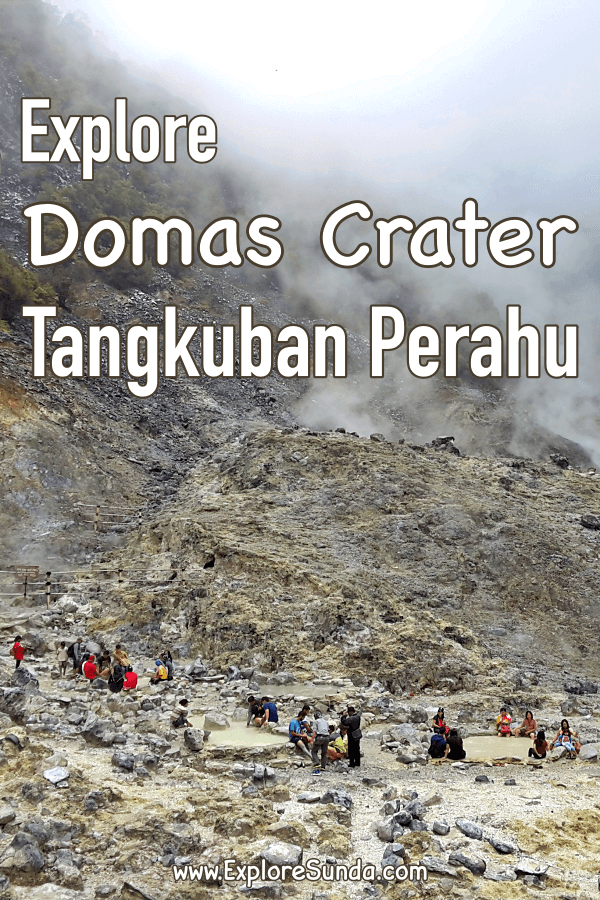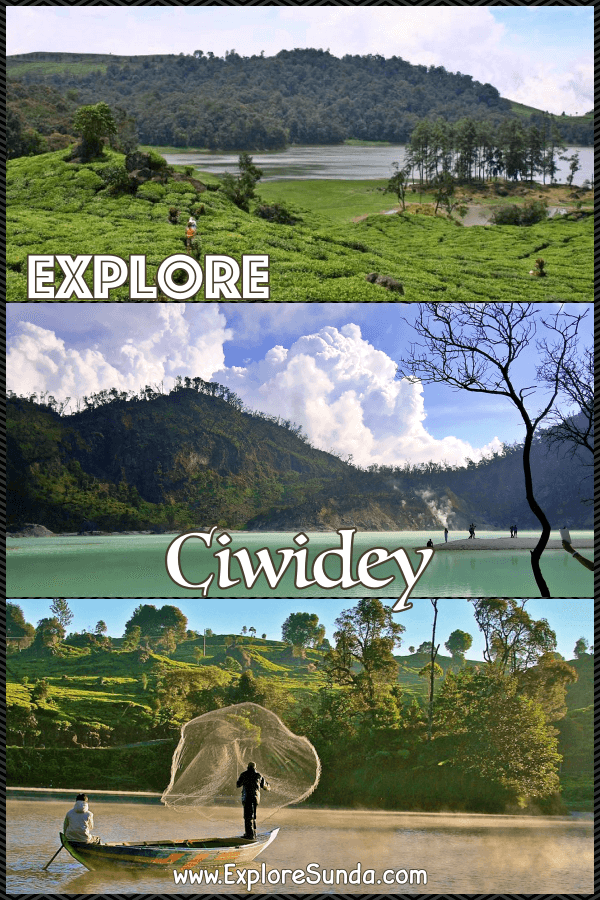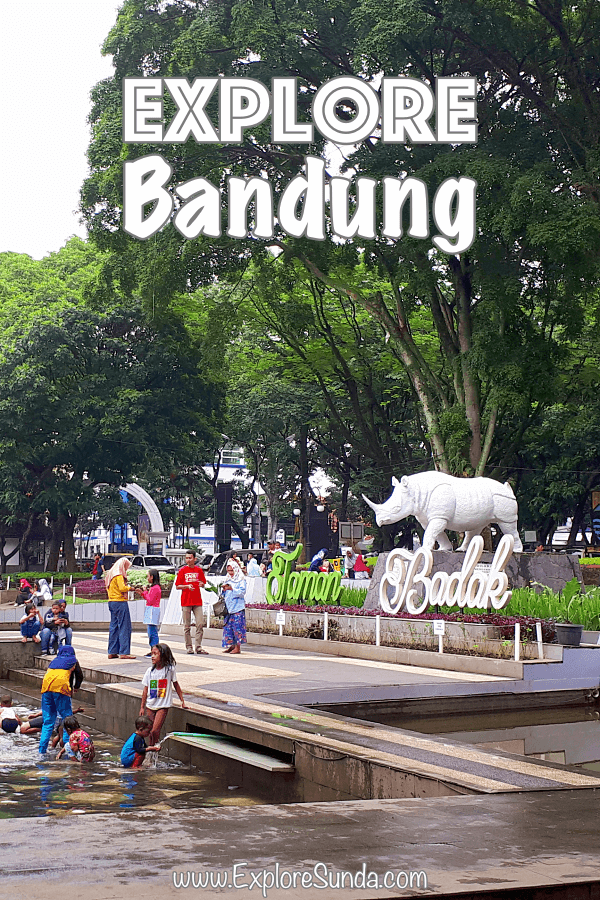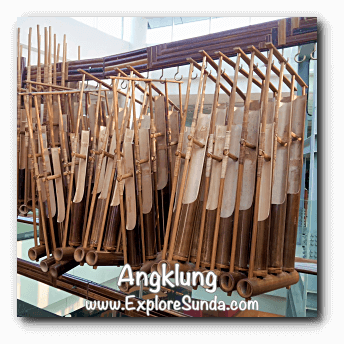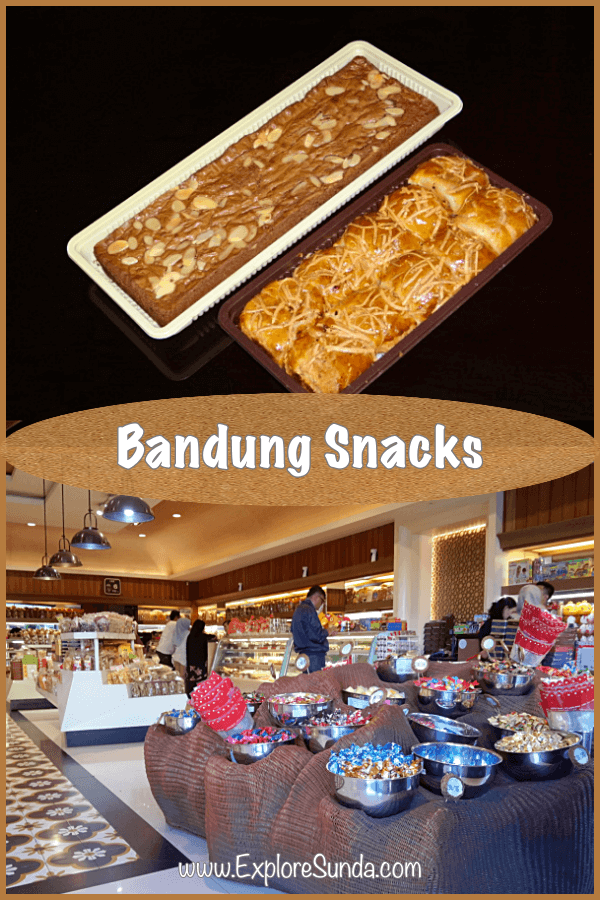Domas Crater at
Mount Tangkuban Perahu
Kawah Domas is one of the thirteen craters located in Mount Tangkuban Perahu. The word "Kawah" is Bahasa Indonesia for "crater", while "Domas" has two possible meanings. The first meaning is "eight hundred", which implies that there are many craters in Mount Tangkuban Perahu. The second meaning of "Domas" is "gold", which has led some people to believe that the name refers to the golden hue of the sulfur found around the crater.
Visiting Kawah Domas is relatively safe. You can walk on the crater, soak your feet in hot springs ponds, and even boil eggs in the scalding waters.
There are two ways to get to Domas Crater, but both require some hiking. The first and longer route involves hiking through the woods from Kawah Ratu (Queen Crater) at the top of Mount Tangkuban Perahu, which can be quite time-consuming and strenuous.
My recommendation would be to take the direct entrance to Kawah Domas. This entrance is on the way from the ticket booth at the foot of the mountain to Kawah Ratu. You'll find a small car park and clean public toilets across this entrance.
Hiking to Domas Crater in Mount Tangkuban Perahu
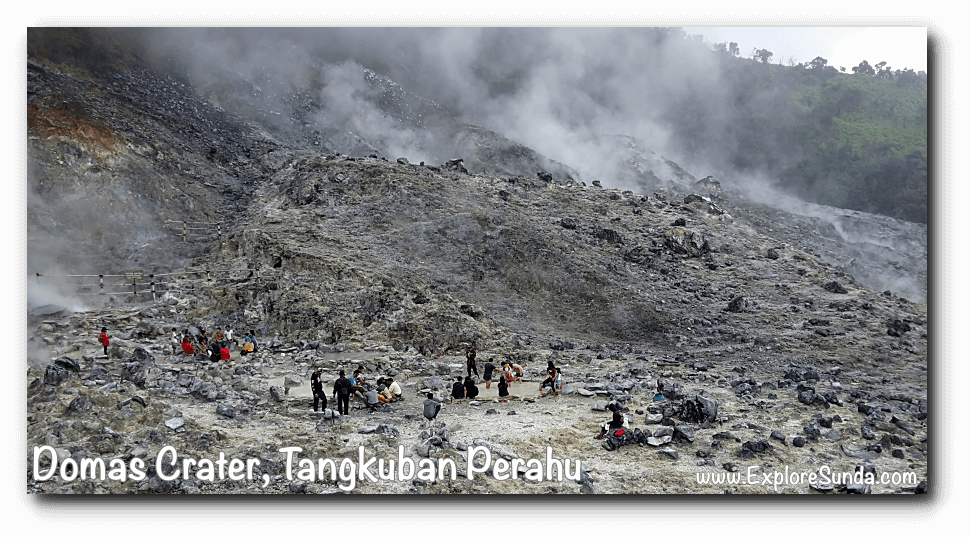 Visitors enjoying mud spa and boiling eggs at Kawah Domas.
Visitors enjoying mud spa and boiling eggs at Kawah Domas.Ticket:
Rp. 100,000 incl. guide
1 guide for 1-6 guests
Opening Hours:
8am - 3.30pm daily
If you choose the direct entrance to Domas Crater, you will hike through the forest for around 1.2 kilometers. Although it is a relatively easy hike, all visitors entering through this entrance are required to purchase additional tickets that include a guide. Unfortunately, there is no information about this ticket on the official website of Taman Wisata Alam Tangkuban Parahu. Based on our experience in 2017, the ticket for domestic tourists was Rp. 100,000 (excluding tip) for one guide. Each guide could lead up to six visitors.
Our guide was very polite and informative. He provided us with a lot of information regarding the ecosystem in this forest. For instance, he showed us which ferns were edible and pointed out the oldest tree in the forest, the 300-year-old Jamuju tree. It was located on a ridge next to the trail, and though it looked like any other tree, he explained that what we saw was just the top portion of the tree, with the majority of the trunk hidden far below the ridge.
Next, he showed us a fossilized tree that was a result of the last eruption of Kawah Domas in 1969. During the eruption, hot lava passed through the trees, either destroying them or turning them into instant wooden fossils. Although these trees are dead, they are still standing today since their trunks have hardened instead of weathered over time.
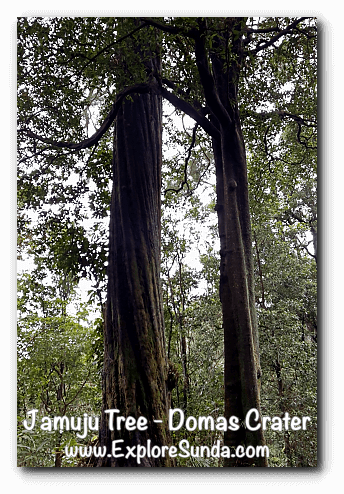 The ancient Jamuju tree.
The ancient Jamuju tree.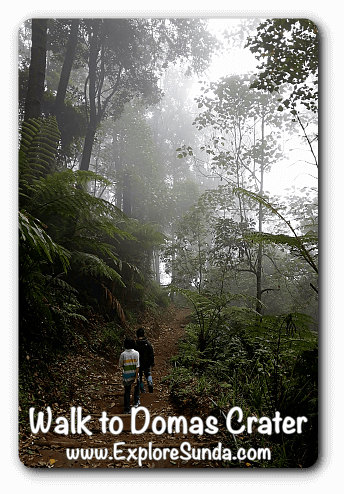 The trail to Kawah Domas.
The trail to Kawah Domas.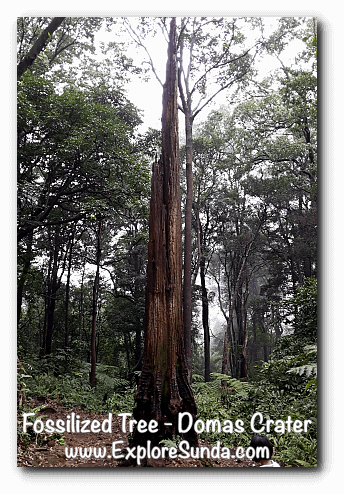 Fossilized tree as a result of Domas' eruption.
Fossilized tree as a result of Domas' eruption.Kawah Domas is an active crater, which is why the Indonesian Agency for Meteorological, Climatological, and Geophysics (BMKG) is continuously monitoring its activities through the many devices they installed along the trail. These devices are small metallic instruments on top of small brick cubes. They are of utmost importance for the safety of thousands to millions of people. Therefore, whenever you see one of these devices, please do not vandalize it.
The first 900 meters of the 1200-meter hike to Kawah Domas is relatively easy, as it follows a slightly sloping dirt path. You can hire an ojek (a motorcycle taxi) to reach this point, but it is expensive. After crossing a bridge, the trail slopes downward and includes several stairs at some points. Overall, the hike is not that difficult. As you approach the entrance to Kawah Domas, the path merges with the grueling path from Kawah Ratu (Queen Crater at the top of Mount Tangkuban Perahu).
You will know that you have reached Kawah Domas by the strong smell of sulfur, which is ten times stronger than in Kawah Ratu. Despite the pungent smell, you can explore this crater and take pictures. Domas Crater has several pools with different temperatures, including a sweltering pool where you can boil eggs and a warmer pool where you can soak your feet or take a mud spa for an additional fee.
Although Kawah Domas opens daily from 8 a.m. to 3.30 p.m., the best time to visit it is in the morning. If you're lucky, you might catch a glimpse of some of the wildlife along the trail, such as Javan Langur (Trachypithecus auratus), Javan Surili (Presbytis comata), Flying Squirrel (Petaurista elegans), and Javan Eagle (Spizaetus bartelsi).
Since the hike usually takes 30-40 minutes each way, it is better to wear comfortable clothes and walking shoes. If you're interested in trying out the mud spa or soaking in the hot pool, we recommend shorts and a T-shirt. However, the weather in the mountains can be unpredictable, with rain and fog rolling in at any time. Hence, the trail could be closed anytime, whenever bad weather hits.
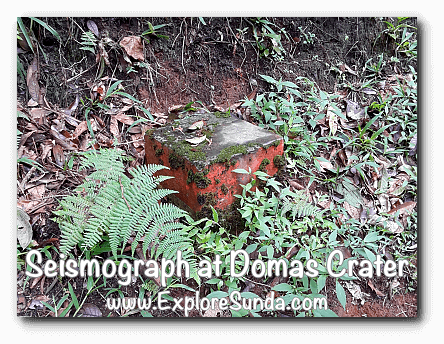 The seismograph that monitors the activity of Domas Crater.
The seismograph that monitors the activity of Domas Crater.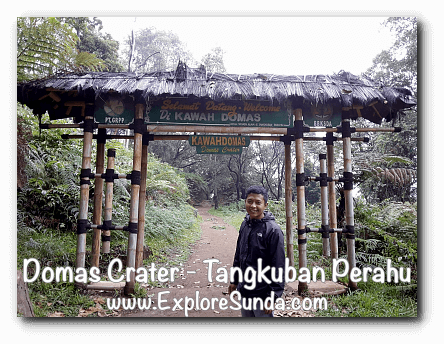 The gate to Kawah Domas in Mount Tangkuban Perahu.
The gate to Kawah Domas in Mount Tangkuban Perahu.While browsing the internet, I came across numerous negative reviews and comments about visitors' experiences at Mount Tangkuban Perahu, including Domas Crater. Most visitors had a bad experience with the peddlers constantly pestering them to buy their merchandise or to accompany them to the crater. Let us share our experience during our visit to the Domas Crater: We, ExploreSunda.com, visited Domas Crater on a Sunday morning in October 2017. First, we were surprised that it was a guided hike to the crater, an additional cost on top of the ticket we bought at the entrance gate. But the price was officially stated in the ticket booth. During our hike, there were no peddlers in sight, and we only had the guide accompanying us. The guide was very knowledgeable and shared a lot of information about the ecosystem, which made our experience more memorable.
A visit to Mount Tangkuban Perahu would be incomplete without visiting the most famous crater on this mountain, Kawah Ratu (Queen Crater). Another popular spot on the same mountain, but with a different entrance, is the Orchid Forest Cikole. Besides Mount Tangkuban Perahu, Kawah Putih (White Crater) in Ciwidey is an enchanting crater worth your visit. Another popular tourist site in Ciwidey is Situ Patenggang, a very ancient crater that has transformed into a tranquil lake.
- Sunda
- Mountain & Volcano
- Domas Crater at Mount Tangkuban Perahu
Recent Articles
-
Roro Jonggrang: A Tale Etched in the Stones of Prambanan Temple
Nov 05, 25 11:52 PM
Unravel the ancient Javanese legend of Roro Jonggrang that bridges myth, devotion, and the grandeur of Prambanan. -
Discover the Vibrant Celebration of Imlek in Indonesia!
Jan 13, 25 03:24 AM
The Chinese New Year of 2576 will be celebrated on January 29, 2025. Discover the special things in this Imlek festival! -
The Site Map of ExploreSunda.com
Nov 26, 24 10:40 PM
A thorough site map to help you browse through the Explore Sunda site.
